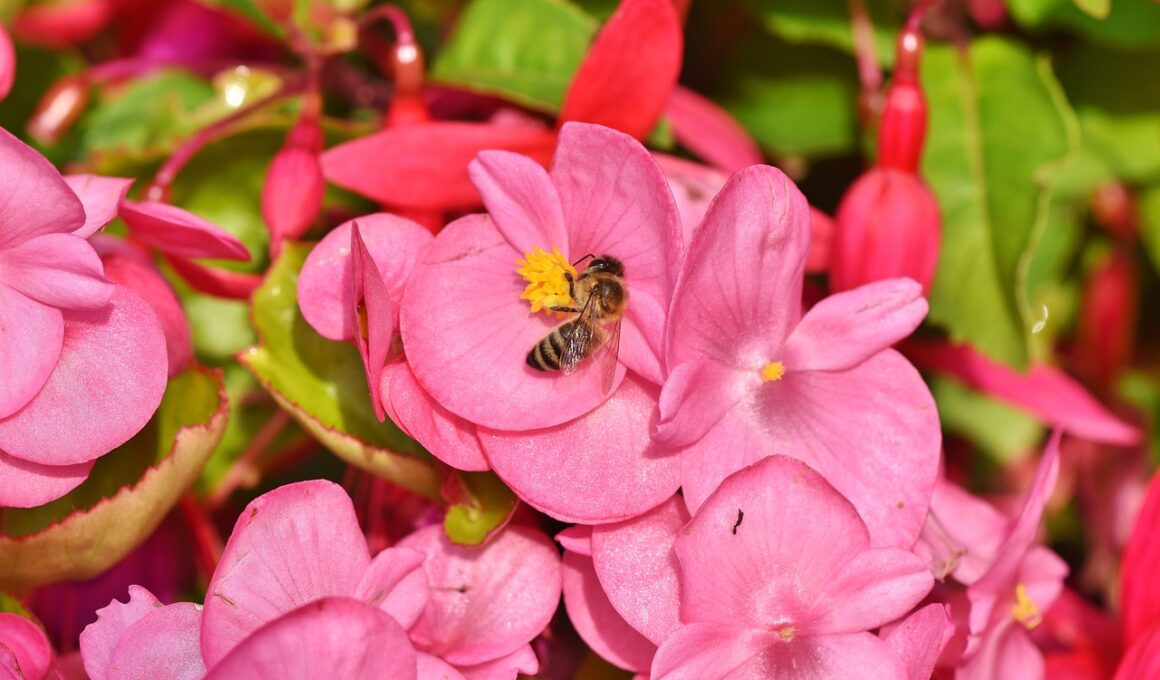Are you a proud owner of begonias in your garden or indoor space? Do you want to keep these beautiful plants healthy and thriving? Then, deadheading might be one of the things you need to consider.
Deadheading is the process of removing spent blooms or flowers from a plant to promote new growth. It is a common practice among gardeners and plant enthusiasts, but the question is, do you need to deadhead begonias?
In this article, we will discuss the benefits of deadheading and different types of begonias. We will also answer the question of whether or not you need to deadhead begonias. Additionally, we will provide you with a step-by-step guide on how to deadhead begonias properly.
With this information, you can maintain your begonias and enjoy their beauty for a longer period. So, let’s dive in and learn more about begonias and deadheading.
Understanding Deadheading and Its Benefits
Understanding deadheading and its benefits is easy. Deadheading begonias is a simple way to help them thrive and show off their stunning blooms. By removing spent flowers, you encourage the plant to produce more blooms. This process also helps the plant conserve energy by not putting resources into producing seeds.
The benefits of deadheading don’t stop there. Regularly removing spent flowers can also prevent diseases and pests from taking hold. By cleaning up the plant and removing any decaying matter, you create a healthier environment for your begonias to grow in.
When it comes to techniques for deadheading begonias, it’s important to use sharp, clean scissors or pruning shears. Cut the stem just above the first set of healthy leaves below the spent flower. Don’t cut too low as this can damage the plant.
By following these simple steps, you’ll be on your way to enjoying a beautiful, healthy begonia plant all season long.
Types of Begonias
There are various types of begonias, each with their own unique characteristics and beauty. Whether you’re looking for a plant to brighten up your home or add color to your garden, there’s a begonia for you.
Here are some popular varieties to consider:
-
Indoor Begonias: If you’re looking for a plant to liven up your home, indoor begonias are a great option. They come in a range of colors, from pink and red to white and yellow. Some popular varieties include the Angel Wing Begonia, which has large, striking leaves, and the Rex Begonia, which has colorful, patterned leaves.
-
Outdoor Begonias: If you want to add some color to your garden, outdoor begonias are a great choice. They thrive in partially shaded areas and come in a range of colors, from bright reds and pinks to soft pastels. Some popular varieties include the Dragon Wing Begonia, which has showy, cascading flowers, and the Tuberous Begonia, which has large, rose-like blooms.
No matter which type of begonia you choose, they all have one thing in common: they’re beautiful and easy to care for. With proper watering and occasional deadheading, your begonias will thrive and add color to your home or garden for years to come.
So go ahead and add some begonias to your collection today!
How Does Winter Dormancy Impact the Need for Deadheading Begonias?
Winter dormancy has a significant impact on the need for deadheading begonias that go dormant in winter. During this period, the plants enter a resting phase, causing their growth and flowering to cease temporarily. Consequently, the demand for deadheading diminishes as begonias cease producing flowers and focus on conserving energy.
To Deadhead or Not to Deadhead?
It’s important to maintain the health and beauty of your begonias, and a simple way to do so is by removing spent blooms, also known as deadheading. Deadheading is the process of cutting off the dying flowers from your begonias. When done correctly, it can provide several benefits for your plants.
Firstly, deadheading can promote the growth of new blooms. When you remove the spent flowers, you are encouraging the plant to produce more buds, resulting in a longer blooming season. Additionally, deadheading can help prevent disease and pests. By removing dead flowers, you are eliminating potential breeding grounds for pests and reducing the risk of fungal diseases.
However, there are some common mistakes to avoid when deadheading your begonias. One mistake is cutting too low on the stem, which can damage the plant and prevent new blooms from growing. Another mistake is not deadheading enough, which can result in a less attractive plant and a shorter blooming season. To prevent these mistakes, make sure to cut just above the first set of healthy leaves and deadhead regularly throughout the blooming season.
Remember, deadheading can be a simple and effective way to maintain the health and beauty of your begonias. By promoting new growth and preventing disease, you can enjoy a longer blooming season and a healthier plant. Just make sure to avoid common mistakes and deadhead regularly for the best results.
How to Deadhead Begonias
Learn how to keep your begonias healthy and beautiful by removing spent blooms with this simple deadheading guide. Pruning techniques can be tricky, but with a little practice, you’ll be able to remove the dead flowers without damaging the healthy ones.
First, locate the spent blooms and follow the stem down to where it meets a healthy leaf. Using a sharp pair of scissors or pruning shears, make a clean cut just above the leaf. This will encourage new growth and prevent disease from spreading.
Timing is key when it comes to deadheading begonias. The best time to remove spent blooms is when the flowers start to fade or wilt. If you wait too long, the flower will dry up and produce seeds, which can take away from the plant’s energy and beauty.
Deadheading regularly will also encourage the plant to produce more blooms throughout the growing season, giving you more vibrant colors and longer-lasting flowers.
Incorporating deadheading into your regular gardening routine is a great way to keep your begonias healthy and looking their best. By following these simple pruning techniques and timing tips, you’ll be able to remove spent blooms with ease and encourage new growth. With a little practice and patience, you’ll have a beautiful and vibrant begonia garden in no time.
Other Care Tips for Begonias
If you want to keep your begonias healthy and looking their best, there are plenty of other care tips to follow beyond deadheading. One important aspect is watering frequency. Begonias don’t like to sit in water, so make sure the soil is well-draining and only water when the top inch of soil feels dry to the touch. Overwatering can lead to root rot and ultimately kill your plant.
Another factor to consider is soil type. Begonias prefer a slightly acidic soil with a pH between 5.5 and 6.5. You can achieve this by using a potting mix specifically designed for acid-loving plants or by adding peat moss to your current soil. Additionally, fertilize your begonias regularly with a balanced, water-soluble fertilizer to provide them with the necessary nutrients to thrive.
Overall, taking care of begonias is not difficult, but it does require attention to detail. By monitoring your watering frequency, using the right soil type, and fertilizing regularly, you can ensure your begonias remain healthy and vibrant. Remember, a little effort goes a long way in keeping your plants happy and flourishing.
Frequently Asked Questions
Can deadheading begonias affect their growth?
Pruning techniques are essential for plant maintenance, and deadheading begonias is one way to promote growth and encourage more blooms. By removing spent flowers, you’re directing the plant’s energy towards producing new growth instead of wasting it on seed production.
Deadheading also helps prevent disease and pests from taking hold, as well as keeping the plant looking tidy and attractive. It’s important to use the right tools and techniques when deadheading begonias to avoid damaging the plant.
With regular deadheading and other pruning techniques, you can ensure that your begonias stay healthy, vibrant, and full of life.
Is it necessary to use special tools for deadheading begonias?
When it comes to deadheading begonias, using your hands or shears both have their pros and cons. Some gardeners prefer using their hands as it allows them to feel for the right spot to snip and can be more precise. However, using shears can be more efficient and save time.
If you choose to use your hands, make sure to wear gloves to protect your fingers from thorns or prickly stems. Alternatively, if you decide to use shears, make sure they are sharp to avoid crushing or damaging the stem.
Tips for efficient deadheading without special tools include snipping the stem above the first set of leaves, cutting at a 45-degree angle, and removing any dead or yellow leaves. By following these tips, you can ensure your begonias stay healthy and continue to produce beautiful blooms throughout the season.
Can deadheading begonias attract pests?
When it comes to maintaining your begonias, pest prevention should be at the top of your priority list. One effective way to prevent pests is through proper deadheading techniques.
Deadheading your begonias can help promote healthy growth, but it’s important to do it correctly to avoid attracting pests. Make sure to use sharp, clean tools and cut the stem just above the first set of healthy leaves. Avoid leaving any flower heads or stems on the ground, as this can attract unwanted pests.
By incorporating regular deadheading into your maintenance techniques, you can help keep your begonias healthy and pest-free.
How frequently should you deadhead begonias?
Pruning techniques play a crucial role in plant rejuvenation, and this is no exception when it comes to begonias. Deadheading is the process of removing spent flowers from the plant to encourage more blooms. It not only helps to keep the plant looking tidy, but it also promotes healthy growth.
The frequency of deadheading begonias depends on the variety and the stage of growth. Generally, it’s recommended to deadhead them every two to three weeks during the growing season. This will encourage the plant to focus its energy on producing new blooms rather than seed production.
So, if you want to keep your begonias looking lush and healthy, be sure to incorporate regular deadheading into your pruning routine.
Does deadheading begonias affect their blooming season?
Deadheading your begonias can have a significant impact on their blooming season. By removing the spent flowers, you encourage the plant to produce more blooms, resulting in a longer and more vibrant flowering period.
However, it’s important to deadhead at the right frequency to avoid damaging the plant’s overall health. Deadheading too frequently can exhaust the plant, while neglecting to deadhead can lead to the development of seed pods, diverting energy away from flower production.
By finding the right balance, you can ensure healthy, long-lasting blooms for your begonias.
Conclusion
So, do you need to deadhead begonias? The answer is yes, if you want your plant to look its best and continue to produce blooms.
Deadheading is the process of removing spent flowers from a plant to encourage new growth and more blooms. There are different types of begonias, but regardless of the variety, deadheading can be beneficial.
It helps to prevent the plant from expending energy on producing seeds and instead directs it towards new growth. To deadhead begonias, simply pinch or cut off the faded flowers at the base of the stem.
With proper care, your begonias can continue to thrive and add beauty to your home or garden.








